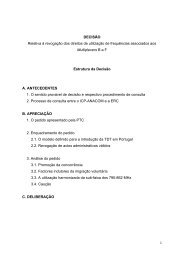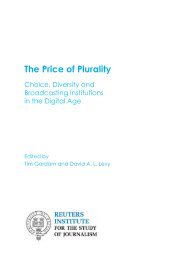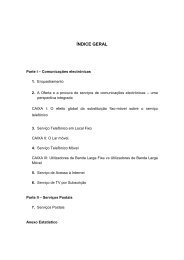The Digital Fact Book - Quantel
The Digital Fact Book - Quantel
The Digital Fact Book - Quantel
- No tags were found...
You also want an ePaper? Increase the reach of your titles
YUMPU automatically turns print PDFs into web optimized ePapers that Google loves.
13.5 MHzThis is the sampling frequency of luminance in SD digital television. It is representedby the 4 in 4:2:2. <strong>The</strong> use of the number 4 is pure nostalgia as 13.5 MHz is in the regionof 14.3 MHz, the sampling rate of 4 x NTSC color subcarrier (3.58 MHz), used at the verygenesis of digital television equipment.Reasons for the choice of 13.5 MHz belong to politics, physics and legacy. Politically ithad to be global and work for both 525/60 (NTSC) and 625/50 (PAL) systems. <strong>The</strong> physicsis the easy part; it had to be significantly above the Nyquist frequency so that the highestluminance frequency, 5.5 MHz for 625-line PAL systems, could be faithfully reproducedfrom the sampled digits – i.e. sampling in excess of 11 MHz - but not so high as to produceunnecessary, wasteful amounts of data. Some math is required to understand the legacy.<strong>The</strong> sampling frequency had to produce a static pattern on both 525 and 625-line standards,otherwise it would be very complicated to handle and, possibly, restrictive in use. In otherwords, the frequency must be a whole multiple of the lines speeds of both standards.<strong>The</strong> line frequency of the 625/50 system is simply 625 x 25 = 15,625 Hz(NB 50 fields/s makes 25 frames/s)So line length is 1/15,625 = 0.000064 or 64µs<strong>The</strong> line frequency of the 525/60 NTSC system is complicated by the need to offsetit by a factor of 1000/1001 to avoid interference when transmitted. <strong>The</strong> line frequency is525 x 30 x 1000/1001 = 15,734.265 Hz. This makes line length 1/15,734.265 = 63.5555µs<strong>The</strong> difference between the two line lengths is 64 – 63.55555 = 0.4444µsThis time divides into 64µs exactly 144 times, and into 63.5555µs exactly 143 times.This means the lowest common frequency that would create a static pattern on bothstandards is 1/0.4444 MHz, or 2.25 MHz.Now, back to the physics. <strong>The</strong> sampling frequency has to be well above 11 MHz,so 11.25 MHz (5 x 2.25) is not enough. 6 x 2.25 gives the sampling frequency that hasbeen adopted – 13.5 MHz.Similar arguments have been applied to the derivation of sampling for HD. Here 74.25 MHz(33 x 2.25) is used.See: 4:1:1, 4:2:0, 4:2:2, 4:4:4, 4f sc, Nyquist (frequency)14:9A picture aspect ratio that has been used as a preferred way to present 16:9 images on 4:3screens. It avoids showing larger areas of black above and below letterboxed pictures butdoes include more of the 16:9 image than 4:3. It is commonly used for analog transmissionsthat are derived from 16:9 digital services.12







